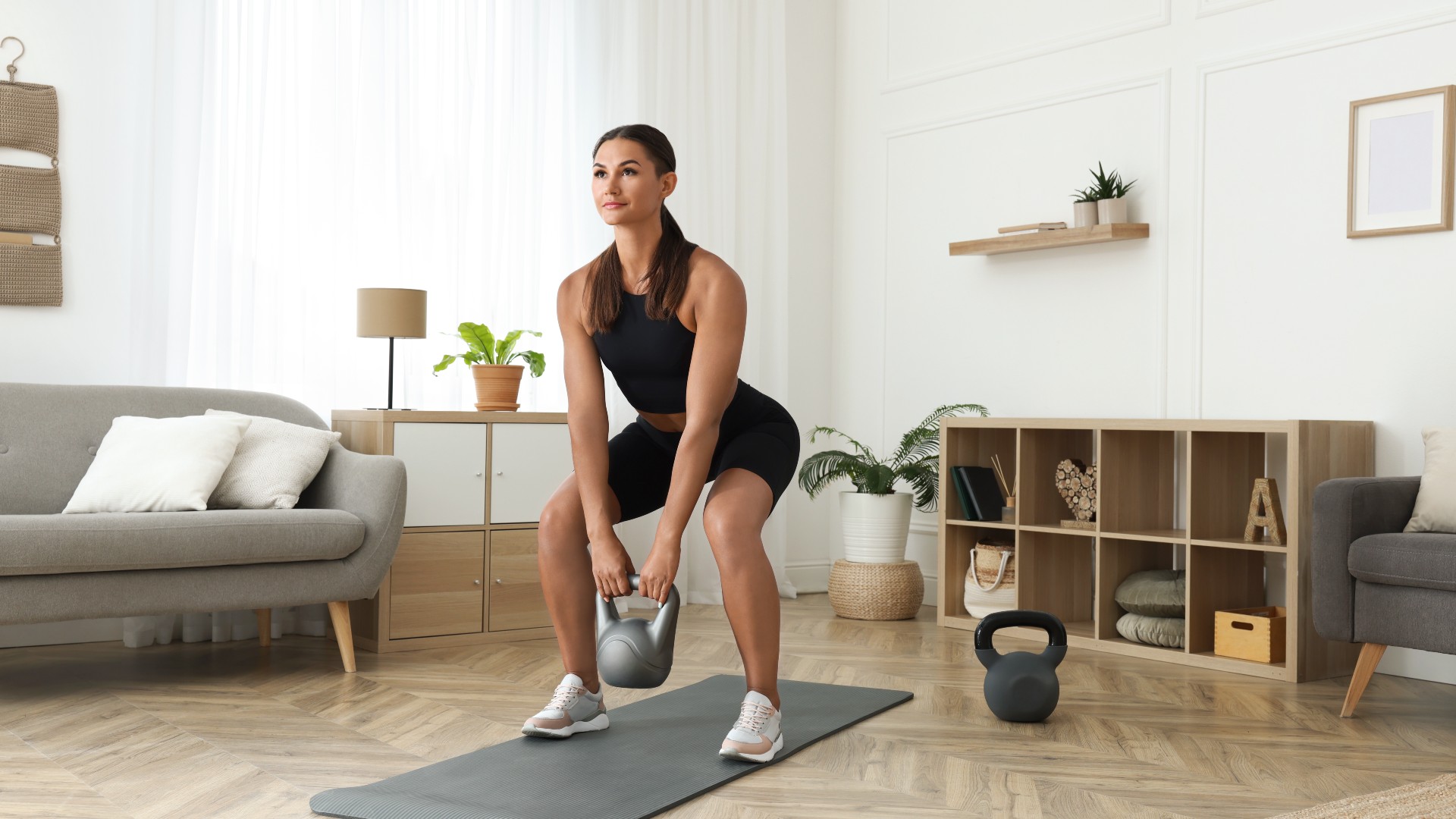
Kettlebell workouts are one of the most versatile forms of functional training there is, and Onnit Academy senior kettlebell coach Eric Leija knows a thing or two about making it rain muscle pain. He uses a single kettlebell and less than 20 minutes of your time to torch every muscle group.
You only need a medium to heavy weight — as a guideline, he uses 16kg — and despite only lasting a short time, this four-move kettlebell complex targets and strengthens muscles everywhere, including your back, chest, arms, shoulders, core and legs.
A complex is a popular way to increase your training volume. It means performing a series of exercises back-to-back, similar to how yoga sequencing works. So, if you think four moves and 20 minutes can’t tire you out, think again.
If you’re new to kettlebell exercises, the 5 best kettlebell exercises for beginners are a great starting point for learning the basics and improving your grip — although we highly rate this workout whether you’re a beginner or in the advanced exerciser camp.
Watch Eric Leija’s 4-move single kettlebell workout
Research — like this study — has shown kettlebell training could improve neuromuscular power, functional strength, balance, core stability and endurance. Although personal trainers or sports coaches can teach with kettlebells, qualified kettlebell instructors like Leija have an underpinning knowledge of the fundamental principles, skills and movement patterns used in kettlebell training.
Unlike dumbbells, kettlebells require more skill to handle, meaning your body works harder to maintain balance and keep you stable, especially when working unilaterally (single-sided), like during this workout.
You can also learn how to hold a kettlebell properly here.
Sign up to get the BEST of Tom's Guide direct to your inbox.
Get instant access to breaking news, the hottest reviews, great deals and helpful tips.
Expect to break a sweat as you piece together compound exercises into a flow series. Not only does this improve mind-body connection, but the repetitive flow-state nature of complexes can feel meditative for many people, almost like learning a dance.
First, Leija asks for ten reps of each exercise with 20-30 seconds between each round, totaling five sets.
Exercises include:
- Deadlift (10 reps)
- Alternating bentover rows (5 reps per side)
- Kettlebell clean into racked squat (5 reps per side)
- Kettlebell clean into strict overhead press (5 reps per side).
Once you’ve finished five sets, rest for no more than a few minutes. Leija then combines the moves into a flow for five sets of 10 reps. This time, perform one rep of each exercise back-to-back on your left side, then repeat on your right (or vice versa).
For example, start with one deadlift, then row once with your left arm. Next, clean the kettlebell into a racked position with your left arm and perform one squat, then lift overhead into a strict press. Repeat on the right side before starting again.
Exercise complexes are a super efficient training method that reduces rest and increases total volume, improving strength and endurance using time under tension (TUT) — a measure of how long your muscles spend active. We recommend watching the video to understand each exercise and the routine properly before you begin.
Your core helps stabilize your torso and prevent injury as you move, so ensure you brace your upper body and actively squeeze as many muscles as possible during each exercise.
Verdict
If it’s a punchy full-body burner you’re after, this one hits the brief — all while building functional strength and working muscles hard under load. If you find yourself without many weight choices regularly, complexes are a brilliant way to match the intensity of heavier weights without them. Alongside these 5 best ways to build muscle without lifting heavier weights, it could help you develop versatility in your training regime.
Exercise complexes are a super efficient training method that reduces rest and increases total volume, improving strength and endurance using time under tension (TUT).
Learn more about how to deadlift, technique for barbell rows and how to overhead press safely, here. But remember that building anything doesn’t happen overnight, and your body needs rest and recovery between sessions to repair and grow.
If you suffer from lower back pain or other existing injuries, check with a qualified physician before starting a new exercise regime, stopping if you experience pain. We recommend starting with a lighter weight and building up gradually if you’re unfamiliar with any exercises.
More from Tom's Guide

Sam Hopes is a level 3 qualified trainer, level 2 reiki practitioner and senior fitness writer at Tom's Guide. She is also currently undertaking her Yoga For Athletes training course. Sam has written for various fitness brands and websites over the years and has experience across brands at Future such as Live Science, Fit&Well, Coach, and T3.
Having worked with fitness studios like F45 and Virgin Active, Sam now primarily teaches outdoor bootcamps, bodyweight, calisthenics and kettlebells. She also coaches mobility and stretching-focused classes several times a week and believes that true strength comes from a holistic approach to training your body.
Sam has completed two mixed doubles Hyrox competitions in London and the Netherlands and finished her first doubles attempt in 1:11.
